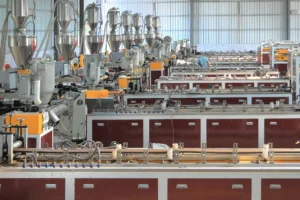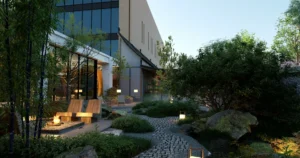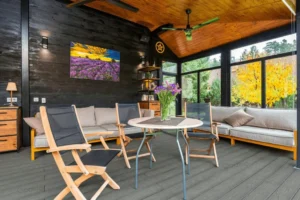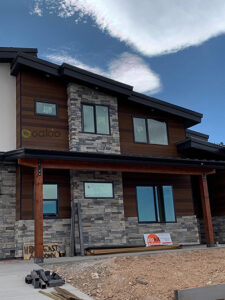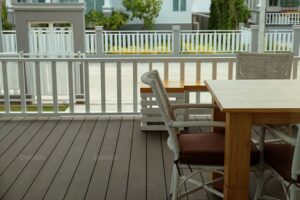The Impact of Pigment Additives on Wood-Plastic Composites (WPC)
Wood-plastic composites (WPC) have become a popular material due to their versatility and environmental benefits. The addition of pigments plays a crucial role in enhancing the appearance of WPC. Pigments can be classified into two categories: organic and inorganic. Organic pigments are known for their bright colors, allowing for rich, vibrant hues with a small quantity of pigment. While organic pigments improve the bonding strength and compatibility between wood fibers and polymers, their higher cost and lower stability compared to inorganic pigments make their use more selective. Therefore, choosing the right pigment for specific WPC products is essential based on the material’s application conditions.
Organic vs. Inorganic Pigments: Key Differences
Advantages of Organic Pigments:
- – Rich Color and High Tinting Strength: Organic pigments provide bright and vibrant colors with a relatively small amount, making them cost-effective in terms of color intensity.
- – Improved Compatibility: Organic pigments help enhance the bonding strength and compatibility between wood fibers and polymers, improving the overall performance of the composite material.
Challenges of Organic Pigments:
- – High Cost: Organic pigments are more expensive than inorganic pigments, limiting their widespread use.
- – Lower Stability: Organic pigments are less stable, especially in terms of their resistance to weathering and light exposure.
Advantages of Inorganic Pigments:
- – Cost-Effective and Stable: Inorganic pigments are generally more stable, have better resistance to UV degradation, and are more affordable.
- – Better Weather Resistance: Inorganic pigments provide superior protection for the material under harsh weather conditions.

Effect of Pigments on WPC Performance Under UV Aging
The impact of pigments on the performance of wood fiber/high-density polyethylene (WF/HDPE) composites during UV aging has been studied extensively. The results indicate that the choice of pigment plays a significant role in the material’s overall performance:
- – Organic Pigments: Despite requiring only small quantities to achieve the same color as inorganic pigments, organic pigments improve the compatibility between wood fibers and polymers. This leads to stronger bonding, resulting in higher flexibility and a larger elastic modulus. However, UV aging causes a significant decrease in the Modulus of Rupture (MOR) by about 30%.
- – Inorganic Pigments: These pigments show more stable performance under UV aging. After aging, the MOR drops by approximately 22%, and the material surface is smoother with fewer cracks. Inorganic pigments provide better protection against UV degradation, ensuring improved durability and longevity of the WPC.
Improvement of Organic Pigments: Methods and Benefits
Although organic pigments offer excellent color stability and enhanced bending properties for WPC, their limitations in terms of stability, dispersibility, covering power, and weather resistance can hinder their performance. To overcome these challenges, modifications to the chemical structure and particle size distribution of organic pigments are being explored.
Modification Techniques for Organic Pigments:
– Surface Treatment: One common modification method is surface treatment, where inorganic compounds are coated onto the surface of organic pigments. This improves their stability, dispersibility, and resistance to light, heat, and weathering.
– Encapsulation Technology: Encapsulation involves enclosing organic pigments within a protective shell of inorganic materials to enhance their performance in WPC.
– Hybrid Inorganic Modification: This method combines organic pigments with inorganic materials to enhance their overall functionality.
Improvement of Pigment Compatibility: Adjusting the surface polarity of the pigment particles can improve their compatibility with the polymer matrix, enhancing the final product’s performance.
Benefits of Modified Organic Pigments:
- – Enhanced Color Stability: Modified organic pigments provide better resistance to fading and discoloration.
- – Improved Mechanical Stability: The stability of the composite material’s mechanical properties is increased, resulting in better durability.
- – Increased Heat Stability: Modified pigments improve the heat stability of the composite, making them suitable for higher temperature applications.
The Role of Pigments in Enhancing the Aging Resistance of WPC
The aging of WPC leads to irreversible material degradation, affecting their mechanical properties and causing eventual material failure. As WPC are widely used in various industries globally, the development of methods to improve their weather resistance has become a critical focus.
– Pigments for Aging Resistance: Studies show that adding pigments to WPC can effectively enhance their aging resistance. The selection of appropriate pigments based on the product’s performance requirements is crucial to prolonging the material’s lifespan.
– The Need for Further Research: There is still a need for further research on how to modify pigments to improve their dispersibility, stability, and compatibility, to maximize their protective effects. Moreover, the synergistic effects of pigments, fillers, and other additives, as well as their collective impact on aging resistance, deserve more exploration.
Future Trends and Market Opportunities
As research in WPC and pigment additives continues to evolve, the functional modification of these materials will likely lead to the development of higher-quality WPC products. The improvement in pigment technology, including surface treatments and hybrid modifications, will enable the production of more durable, stable, and aesthetically pleasing WPC. With ongoing advancements, WPC are expected to expand their market applications, becoming even more widely used in various sectors, including construction, outdoor furniture, and automotive industries.
Trending Reading
What Are the Differences Between the WPC Board and PVC Board?
[2024 Update] How Long Does WPC Decking Last?

